A Picture-Perfect Dip into Bath, England
Plus, Jane Austen shares her thoughts!
Bath, a small town located in the rolling hills of southwest England, is famous for having once been a Roman outpost built around natural hot springs that, in the 18th century, became a spa town frequented by the English upper crust.
Today, visitors love Bath for many reasons: the Gothic Bath Abbey, the River Avon, and the gorgeous Georgian architecture clad in honey-colored limestone that gives the city its striking look.
Shall we take a walk through this lovely English town?
Yes? Awesome!
I’m afraid I’ll be your guide this time. No El Divo or imperious dragons, alas. But I have asked Miss Jane Austen — who spent much time here — to share some of her observations about Bath.
Now strap on your walking shoes, and let’s get going — I have a lot of pictures to take!
The River Avon
Every charming European town needs a river, and the River Avon is Bath’s. It lazily winds through this ancient city, offering serene waterside walks, charming bridges, and the occasional swan with attitude.
The river provides a lovely backdrop to much of the city. Its still waters reflect the beautiful Bath limestone adorning much of the town.
Don’t be fooled by the river’s placid presence. Devastating floods frequently ravaged the city before floodgates were installed in the 1970s.
But now the river is the perfect walking companion as you meander through the city.
💡 Miss Austen says: The River Avon, like any proper lady of good breeding, glides through Bath with an air of serene elegance — but pray, do not be deceived, for beneath her placid surface lie depths most unexpected, ready to catch the unwary.
Bath Abbey
One of the first things you see when arriving in the city is Bath Abbey, a Gothic masterpiece with soaring stained glass and intricate stonework.
The tower dates back to 1611, and while I am rather “churched” out after eight years of travel, I still recommend visiting it.
Although I mostly went for one reason…
No, not to scout my final resting place.
To climb up the bell tower to get this fantastic view of Bath!
💡 Miss Austen says: A visit to the Abbey shall elevate both one’s spirits and one’s heart rate, for the ascent to the tower is a trial worthy of the pious. But persevere! The reward is a view most pleasing and possibly a newfound appreciation for chairs.
The Roman Baths
As with churches, I have seen many ancient Roman ruins at this point in our travels. The Romans apparently traveled everywhere in Ancient Europe — togas must have been as common a sight as retired Americans in baseball caps are today.
So it wasn’t until my third visit that I ponied up the £24.50 (£27.00 on weekends) to tour the Roman Baths.
Was I disappointed?
Not in the least! It’s great!
The bathing complex has two levels, the top of which is decorated with various statues.
But don’t be deceived: the statues on the upper terrace don’t date back to the Roman era. They were added in 1894, although, interestingly, they include representations of ancient Roman generals, English statesmen, and other famous Victorians from that era.
The jade-green water of the main baths provided the perfect surface to reflect the Bath limestone. Yes, my photographer’s heart was singing!
The steaming, mineral-rich waters may look inviting, but don’t try to go for a swim, or you might find yourself fed to the lions. Okay, they’ll probably just politely ask you to leave, but still. Awkward!
The water for the baths comes from rainwater that seeps down through the limestone, where it is heated by geothermal activity to between 69°C and 96°C (156°F and 204°F) before rising again and reaching the baths, where it is typically around 45°C (113°F)
Be sure to save time for the museum and several recently excavated rooms, including this caldarium.
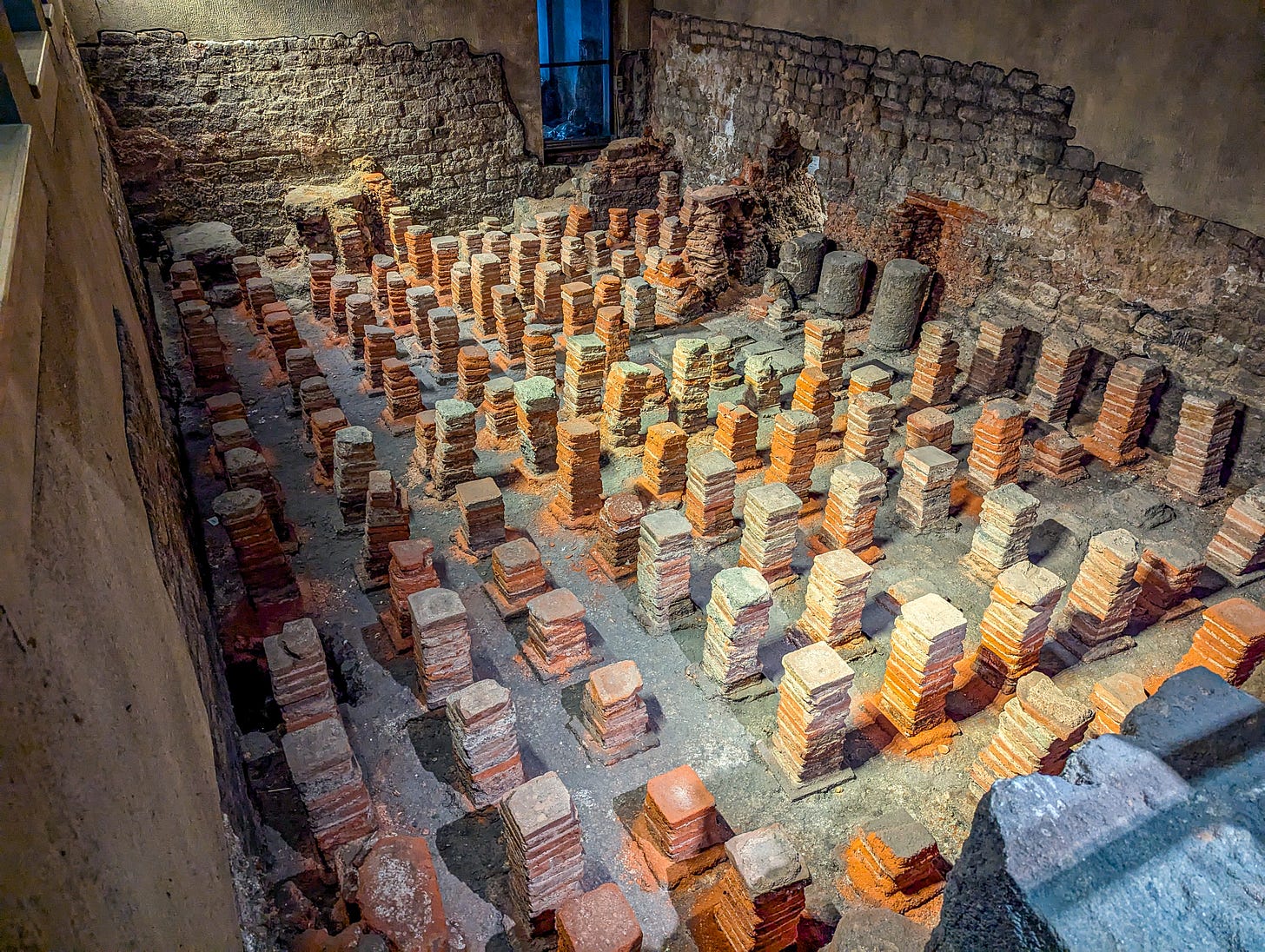
💡 Miss Austen says: I recently learned that the Romans did not bathe alone but with all their acquaintances, as well as slaves, to tend to them — a most shocking notion to modern sensibilities!
Pulteney Bridge
Did you know that Pulteney Bridge is one of only four bridges in the world lined with shops throughout its length?
Okay, that wasn’t the most riveting bit of trivia. But that tracks because even though it’s often listed as one of Bath’s better attractions, I wasn’t impressed by ye olde Pulteney Bridge. However, I did get a nice cup of coffee and bun at a coffee shop on the bridge.
That said, it was pretty enough, with the right angle and lighting.
💡Miss Austen says: Unlike our erstwhile guide, don’t partake of refreshments upon the bridge itself. Utilize it to cross the lovely Avon and then patronize an establishment less likely to fleece one like sheep upon the hillside.
The Royal Crescent
The minute I saw a photo of the Royal Crescent's magnificent sweep, I knew I had to see it. And by “see” it, I mean photograph it!
Look at how gorgeous that curved front is!
The Royal Crescent is one of Bath’s most iconic buildings. It is a masterpiece of Georgian architecture, designed by John Wood the Younger and built between 1767 and 1775.
The Royal Crescent features a striking, sweeping curve of 30 terraced houses fronted with Bath limestone.
Here’s a fun fact: Despite the Royal Crescent's uniform appearance, each apartment’s interior is unique, and the different floorplans reflect the preferences of the original owners.
To get a peek at what it was like to live here, visit No. 1 Royal Crescent. Step back in time and wonder how anyone survived without Wi-Fi.
No, seriously! We all used to live that way!
💡Miss Austen says: Such ostentatious displays of wealth are rather unbecoming. Though, I will confess, should someone offer me a residence here, I would not decline.
The Circus
The Circus in Bath, England, was built between 1754 and 1768. It was designed by John Wood the Elder — yup, John Wood the Younger’s dad. Don’t ask me why John Wood the Elder didn’t simply name his kid John Wood, Jr., which would’ve been much less confusing.
Convinced that Bath had once been a hotbed of Druid activity, Wood designed the Circus to mimic the diameter of nearby Stonehenge. The Circus forms a complete circle, broken only in three places by roads leading into the center.
Wood was also a fan of the Italian architect Andrea Palladio and used Palladian design to draw up his plans. I guess all the Roman ruins already lying around Bath weren’t enough Italian stuff for Mr. Wood.
Wood originally planned to place a grand obelisk to stand in the middle, reinforcing his belief in sacred geometry. However, the obelisk was never built, and over time, trees were planted instead.
The trees are cool but, well, kinda ruin the visual impact of the Circus.
💡 Miss Austen says: One might suppose that Mr. Wood wished to remind us that life is a circle. Personally, I think it's more like a triangle, often between romantic parties too foolish for their own good. Myself excepted, of course!
Bath is Fake!
Now is as good a time as any to tell you Bath’s dirty little secret — the city’s a fake!
Okay, it’s not exactly fake, but Bath’s elegant look is definitely a cheat! Beneath all of that honey-colored limestone lies either a medieval city covered up or newer construction that looks far less impressive from behind.
In the 18th century, developers wanted a city of elegance without overspending, so they added grand limestone facades to the front while using cheaper materials for the backs and interiors.

So when you admire the grandeur of the Royal Crescent or the Circus, just remember: you’re mostly looking at a well-dressed illusion. It’s pretty much the architectural equivalent of a very nice suit hiding a ratty tracksuit underneath.
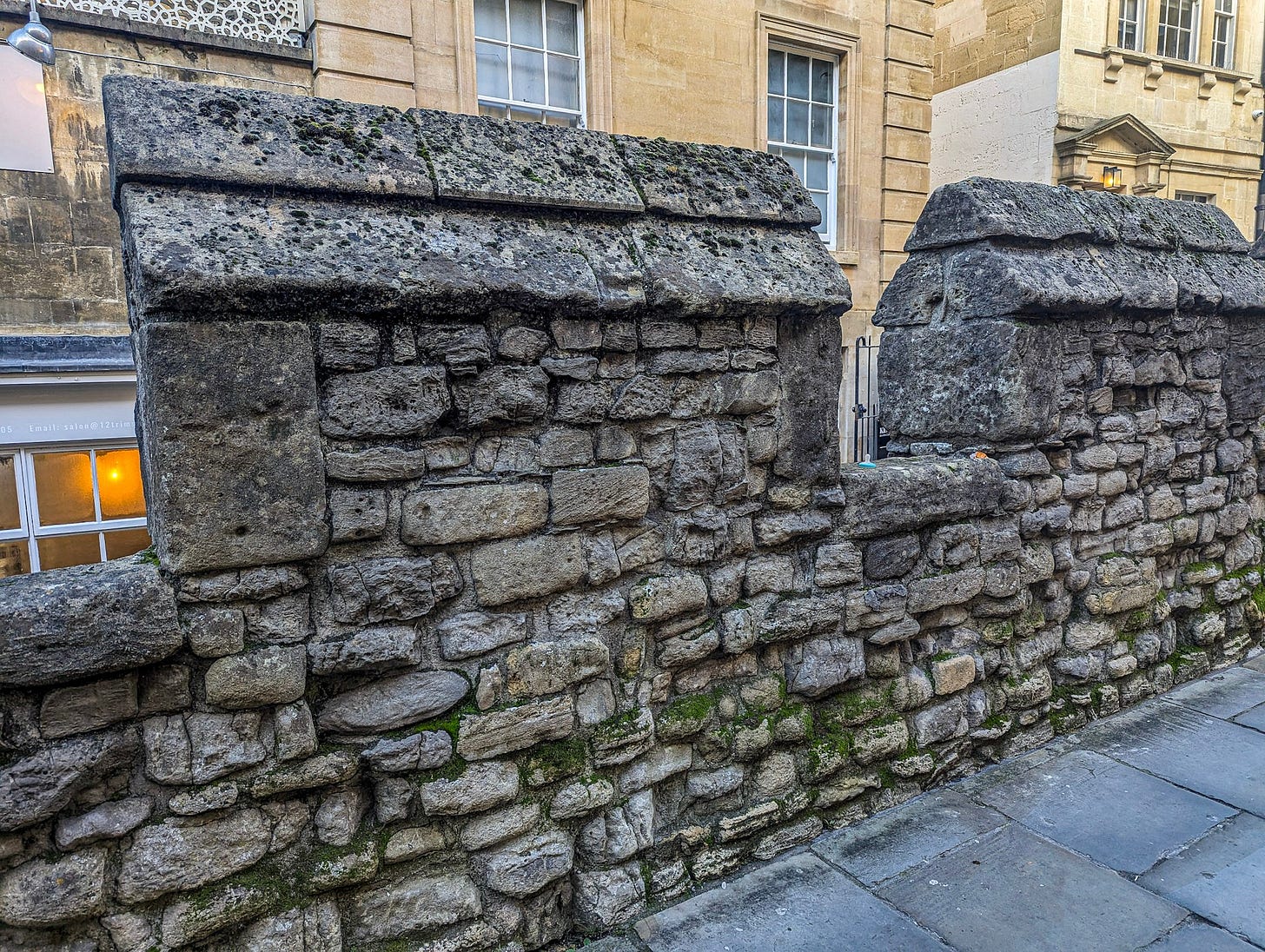
💡 Miss Austen says: Nowhere is the genius of British society more evident than in Bath, where even the humblest dwelling may present a face of fine limestone, while behind it lurks something far less refined. It is a principle much admired among the gentry — so long as appearances are preserved, who would trouble themselves with what lies behind?
Bath Skyline Walk
Brent and I like few things more than getting out and walking. And when that walk is filled with trees bursting with autumn color and views of a lovely British town?
Brilliant!
For those who like their history with a side of fresh air, this National Trust trail offers sweeping views of Bath and the rolling countryside.
The entire walk is 6 miles (9.6 km) long and takes 3.5 to 4 hours, which is perfect on a crisp fall morning.
You’ll pass through woodlands, the University of Bath, and sheep grazing, harkening back to Bath’s day as a center of the wool trade.
A little exertion is required, but the payoff is pure Jane Austen novel territory—minus a brooding Hugh Grant with his tousled hair.
💡Miss Austen says: It is a truth universally acknowledged that a strong constitution thrives on a good long walk — nowhere better than the Bath Skyline, where fresh air and fine views uplift the soul. Even in the rain, one gains either the virtue of exercise or fortitude — particularly when sliding gracefully down a muddy path.
Sham Castle
When doing the Bath Skyline Walk, keep your eyes peeled for one of the stranger things you’ll encounter — a fake castle!
It’s not really a castle. It’s a type of “folly,” which, in this case, means a rich dude had more money than was good for him. The dude in question is Ralph Allen, who had the castle built in 1762 to improve his view because, you know, rich people.
💡 Miss Austen’s Special Tip: There is no sight more off-putting than a gentleman with too much wealth and too little occupation, for he will invariably set about building something utterly unnecessary. Thus stands Sham Castle — a monument less to defense than to the enduring truth that boys with toys do not grow up, they merely acquire more immense playthings.
The Kennet & Avon Canal
One of the delights of travel is discovering something you have never heard of but that you absolutely fall in love with.
That perfectly describes this wonderful waterway Brent and I stumbled upon while perambulating around Bath. (Uh oh — I’m starting to sound like Miss Austen myself.)
That 87-mile-long canal, constructed between 1718 and 1810, has 105 locks and links London with Bristol.
The canal fell into disrepair after the railroads appeared. Thankfully, many years later, volunteers realized the hidden gem in their midst and restored it.
It’s now very popular with cyclists and boaters. The canal is filled with colorful narrowboats, which you can rent and sail along its length.
💡 Miss Austen says: A stroll along the canal is most agreeable, but beware! The temptation to abandon city life and take up residence in a narrowboat is strong, though one suspects the reality is less romantic than the notion.
That’s it for this month’s issue of Michael Takes Too Many Pictures!
If you enjoyed it, please share it with a friend. Or an enemy! I’m desperate and not picky.
Next month: The return of El Divo!
If you enjoyed this newsletter, I would appreciate your sharing it with someone you think might also like it.
Michael Jensen is a travel writer, amateur photographer, and novelist. Check out his other newsletter about his travels at BrentAndMichaelAreGoingPlaces.com.








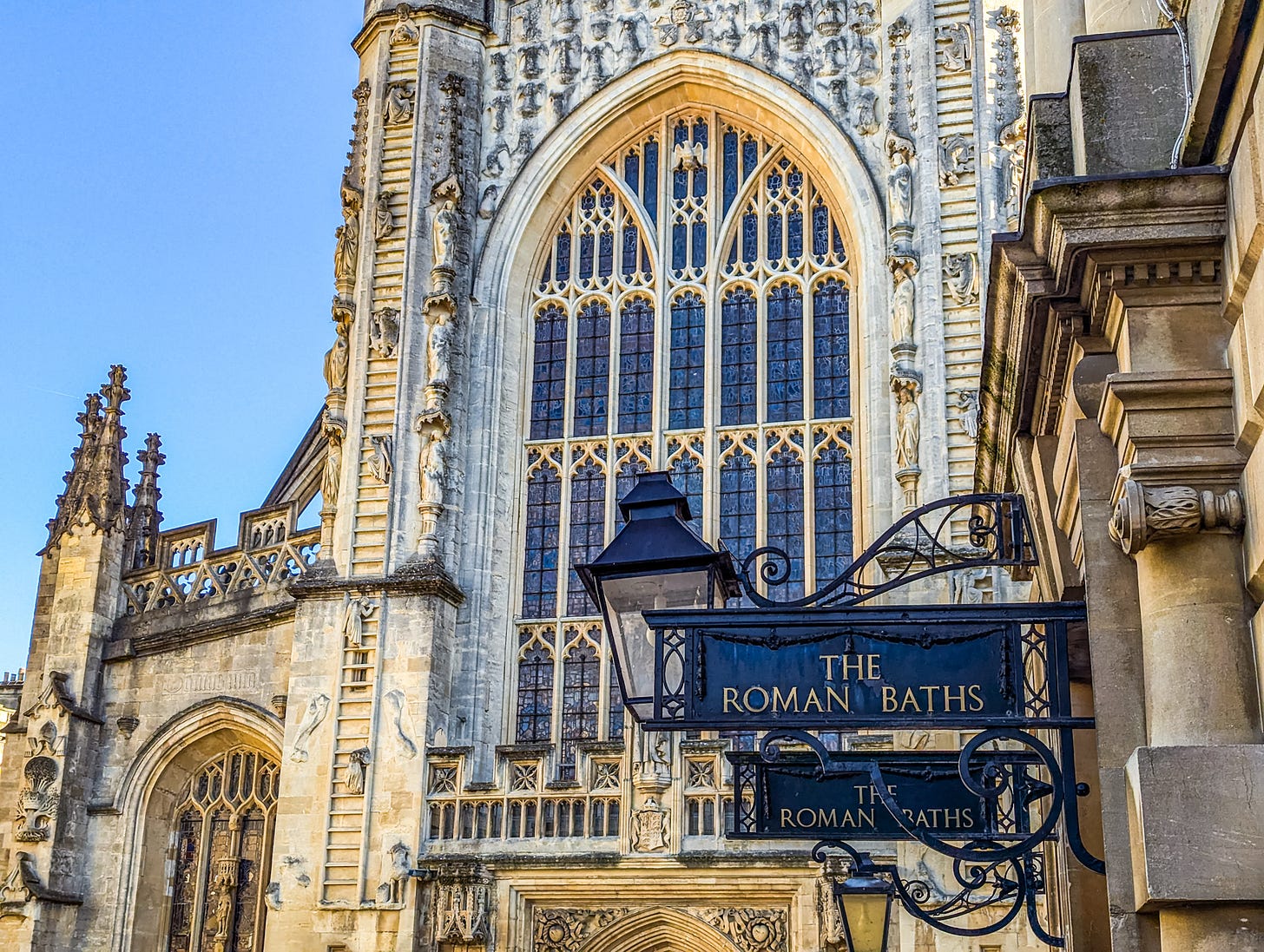

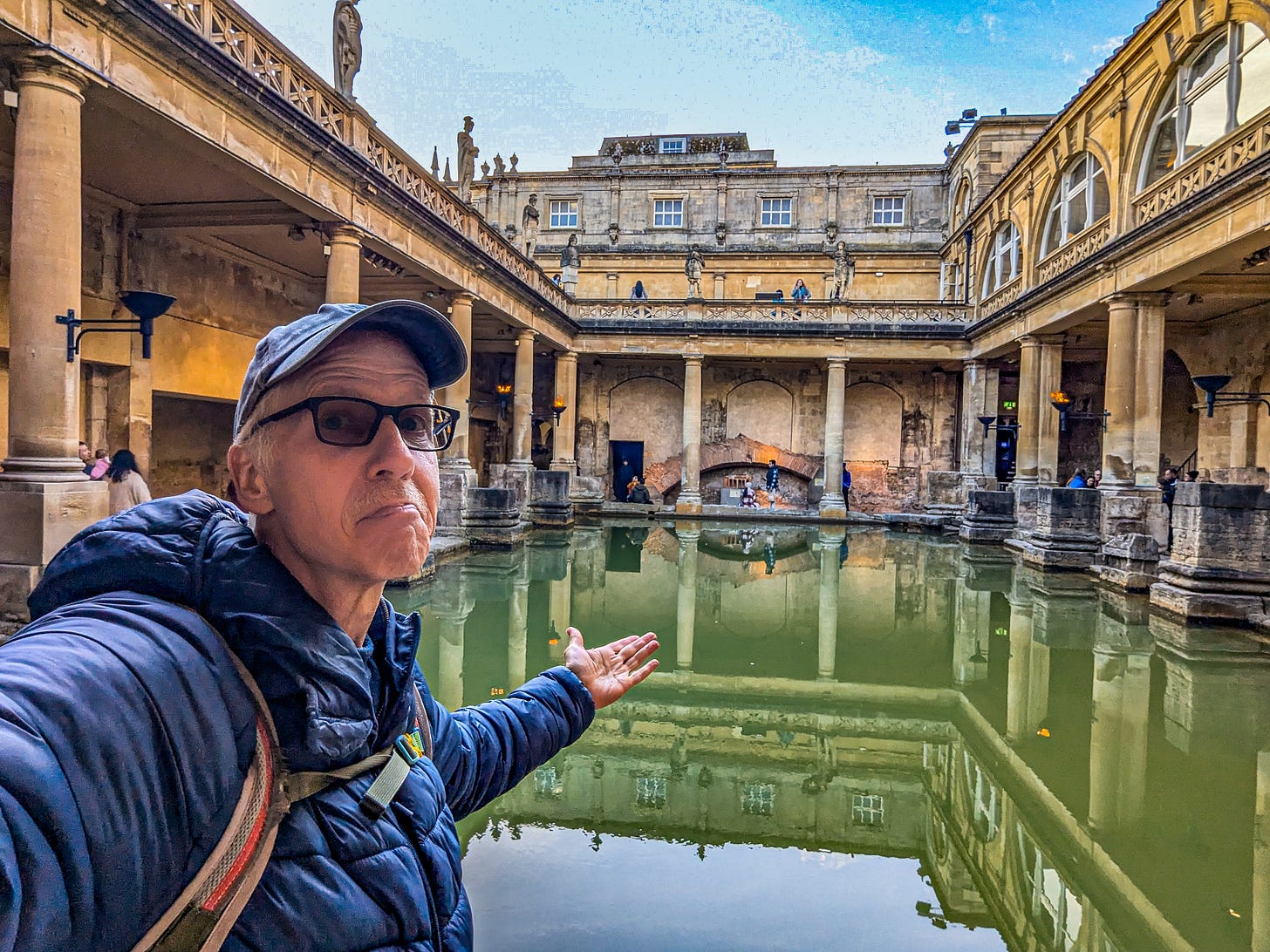

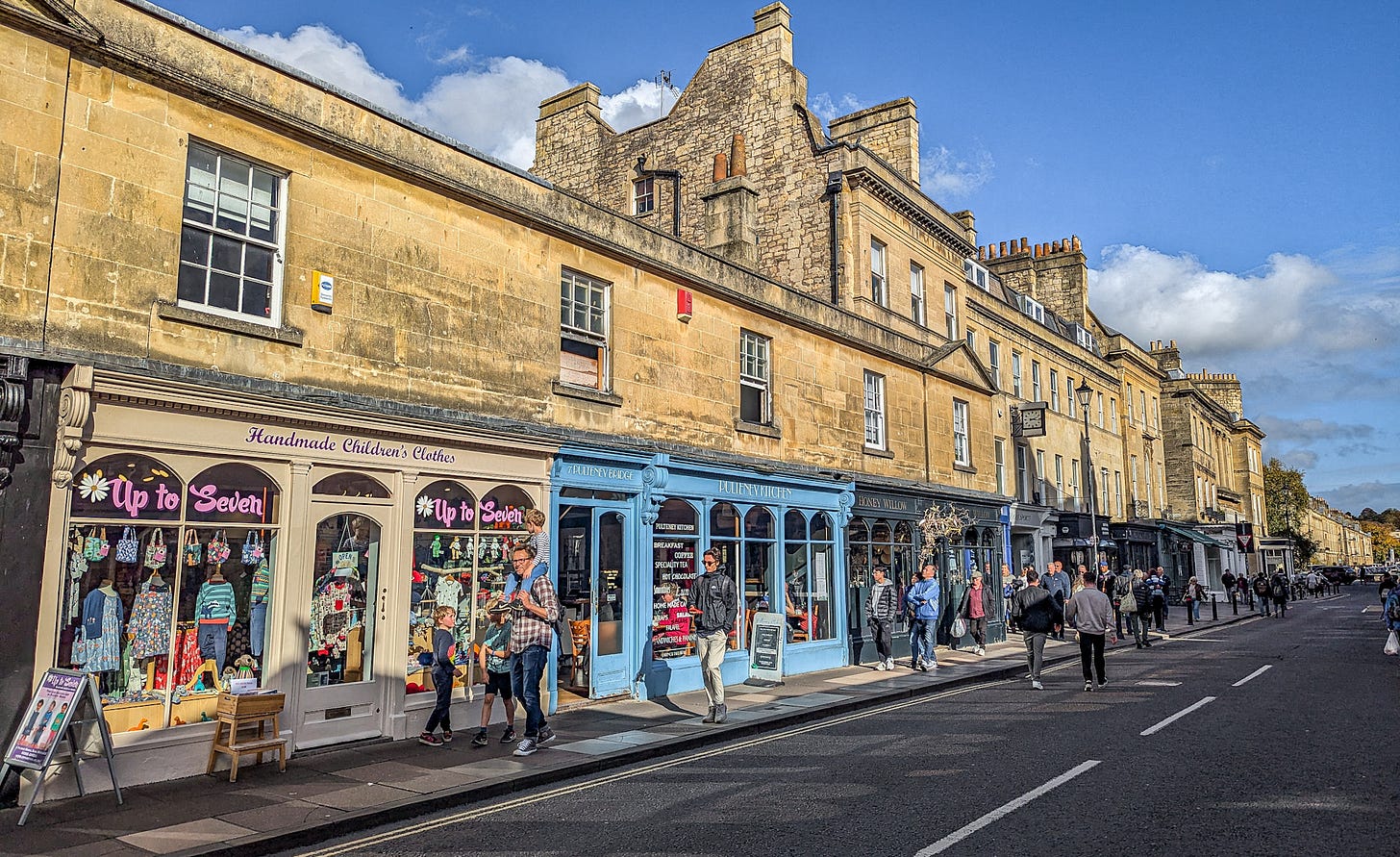
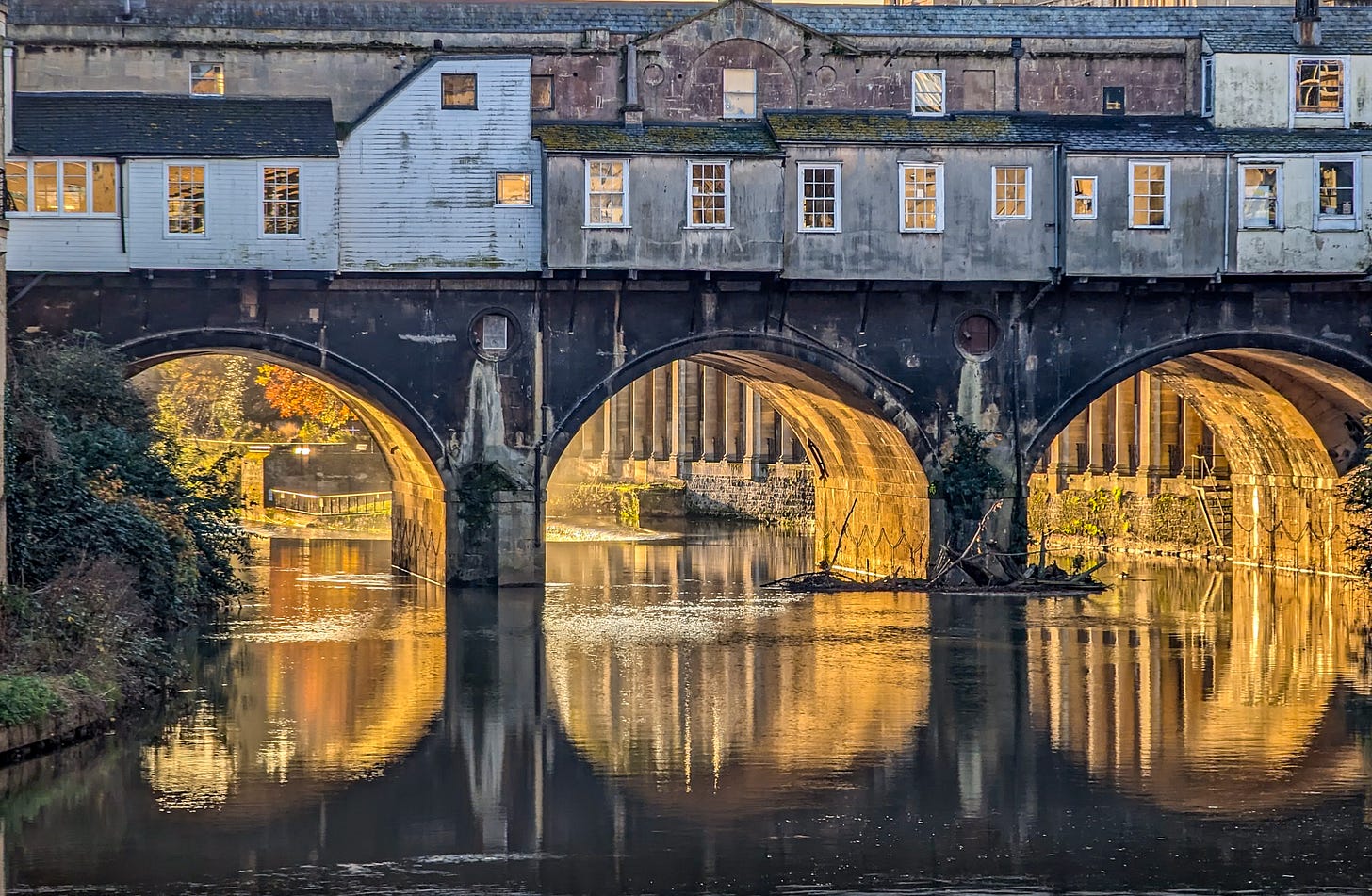

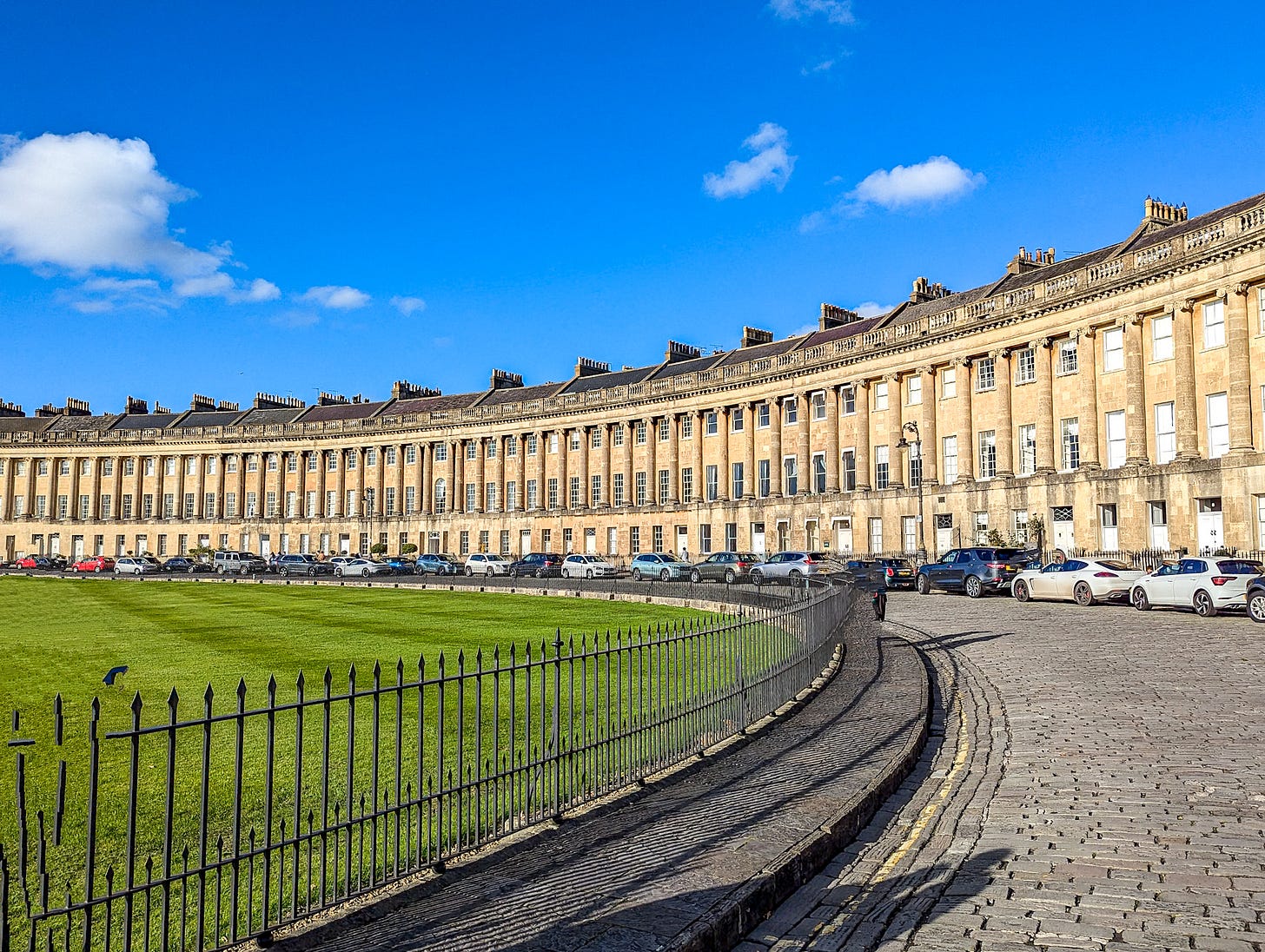
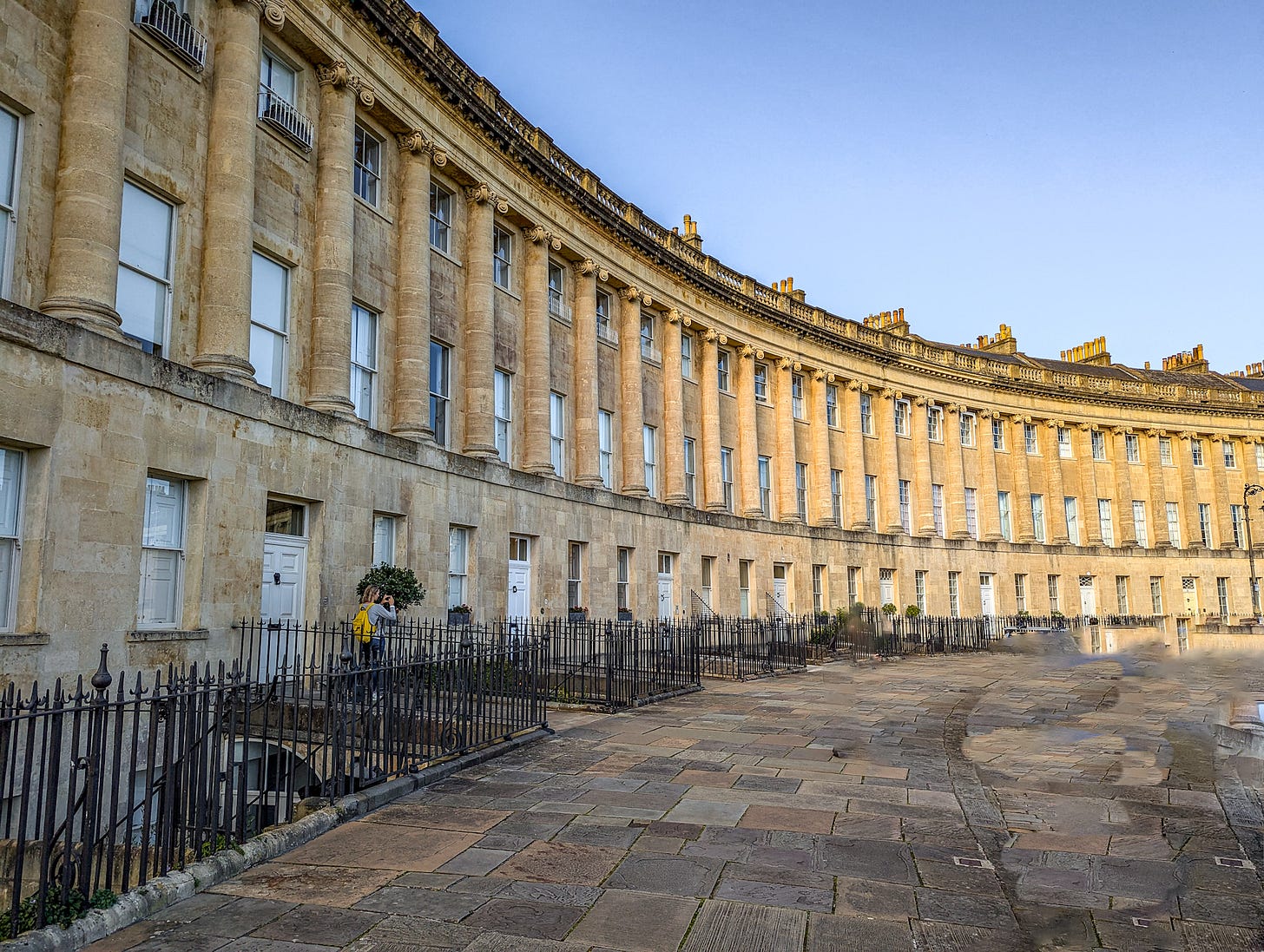
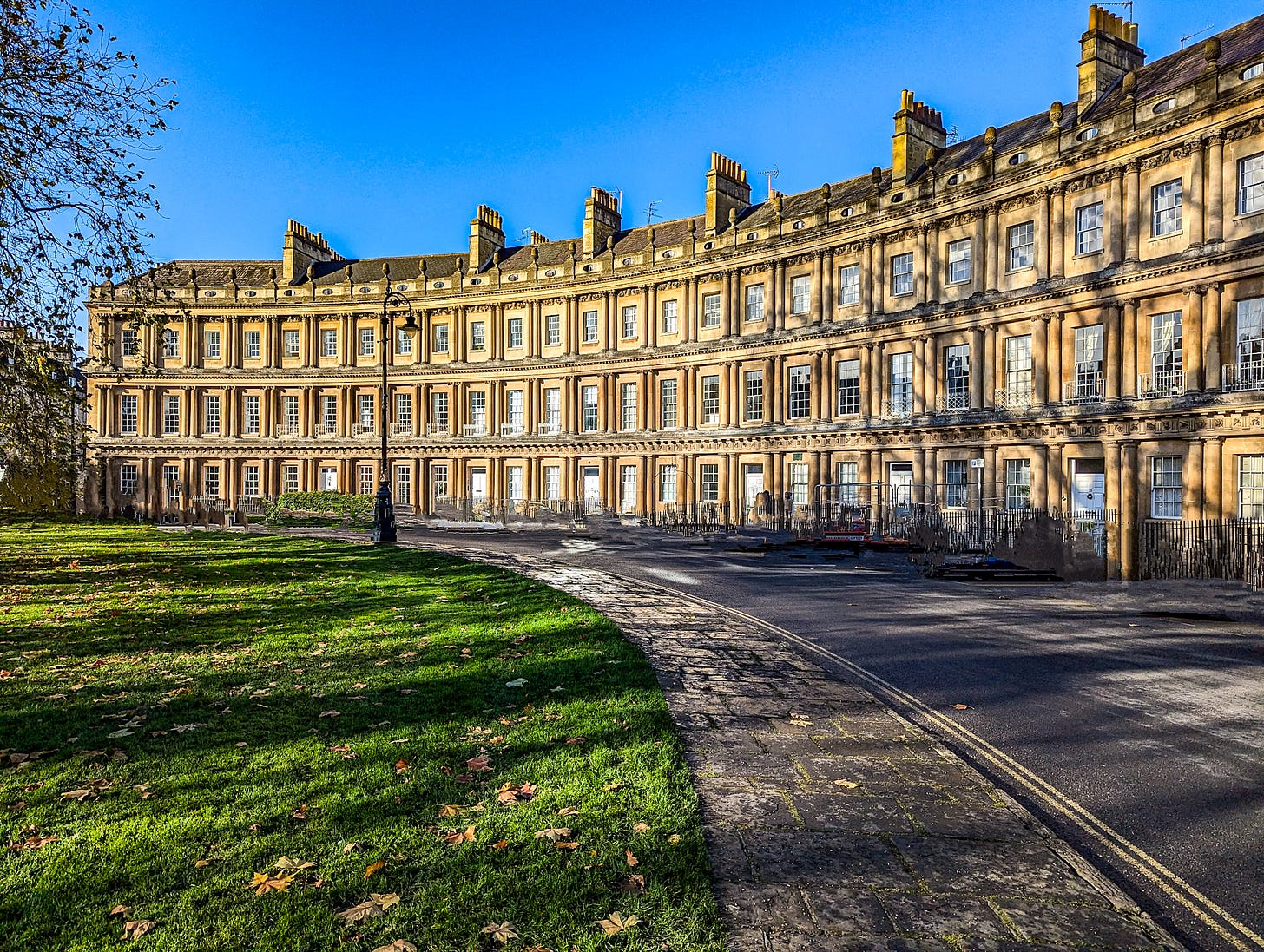


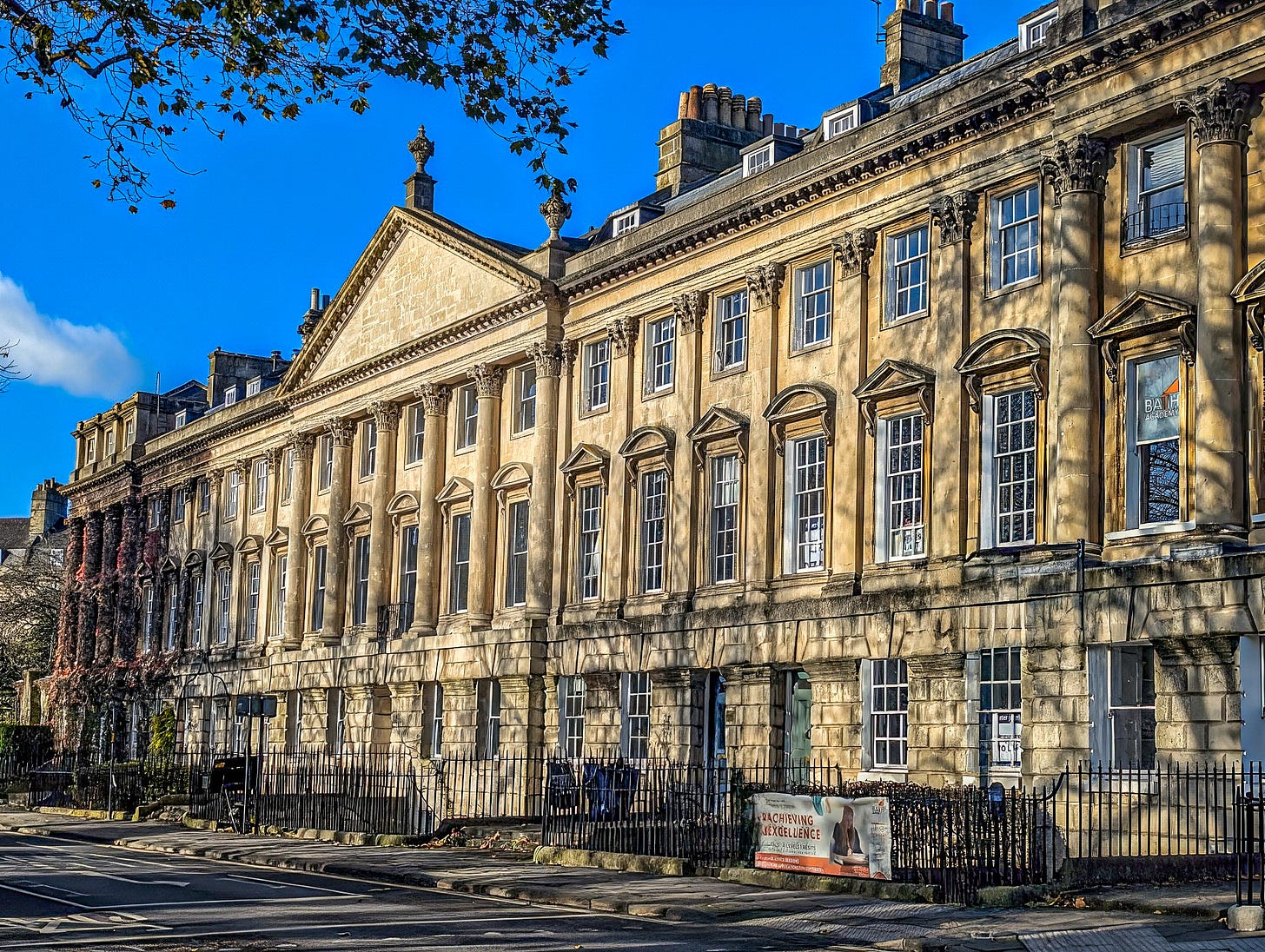

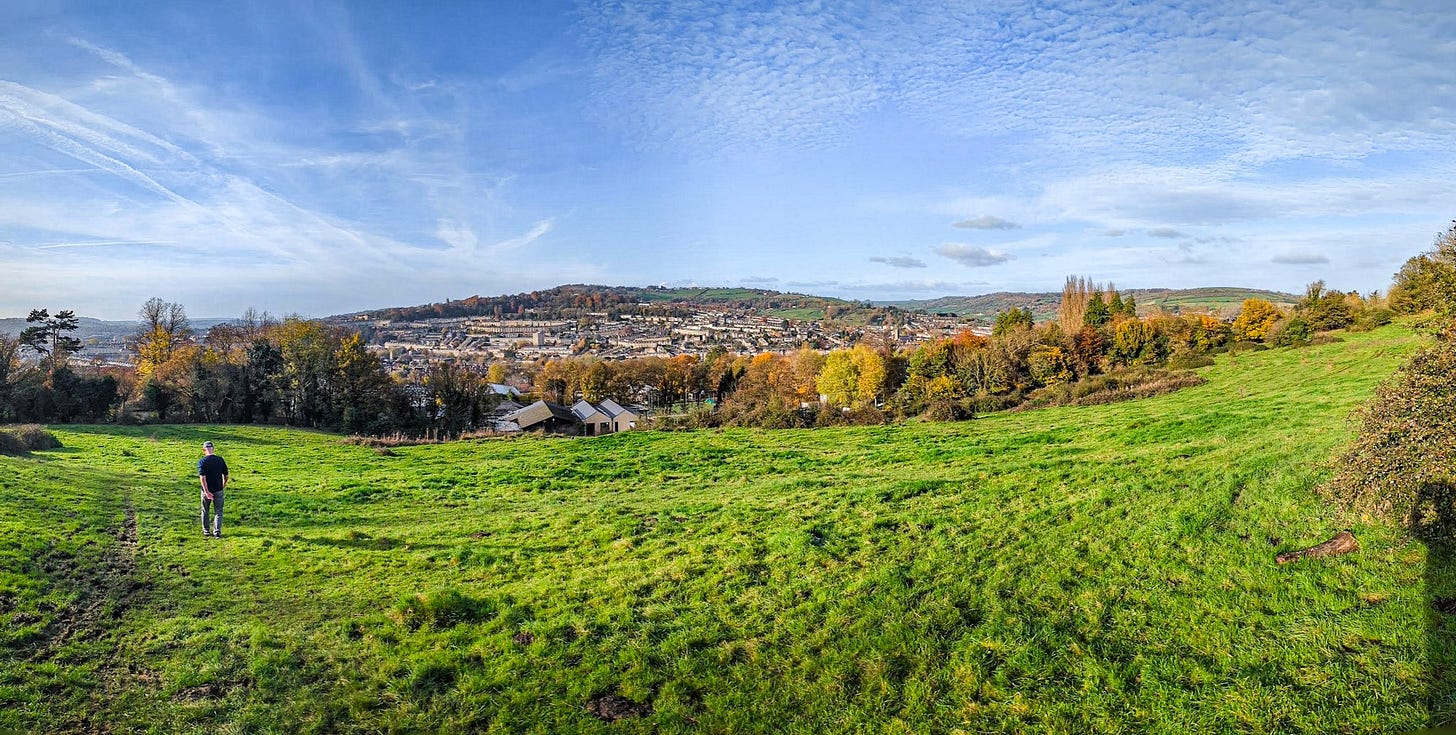





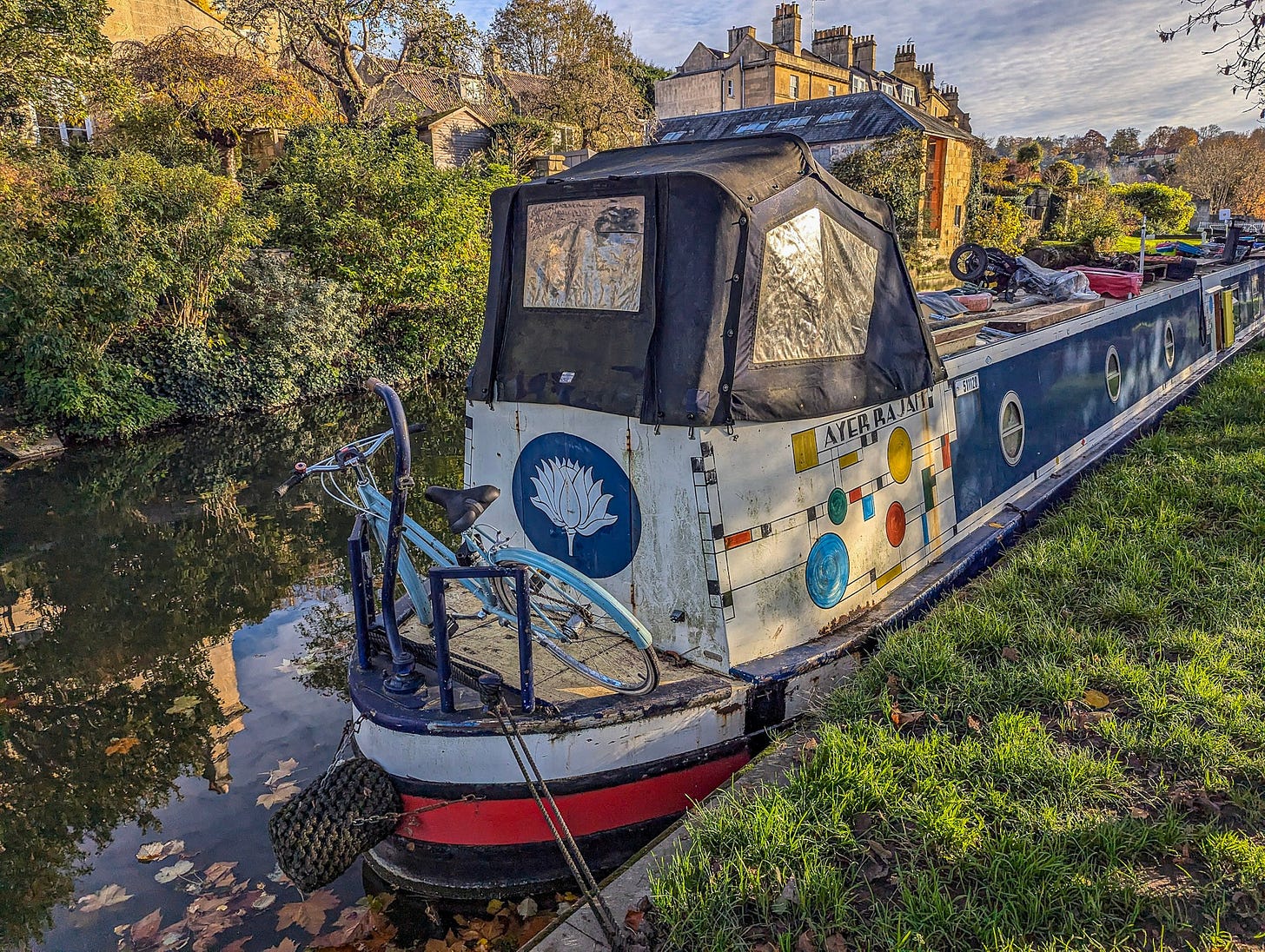

Wow, these were some amazing photos, Michael! Bath is gorgeous. I've often heard that but have never seen photos to this extent. Thank you! A truly lovely place indeed.
My brother went to university in Bath, so I used to visit often. Beautiful place and beautiful photos!